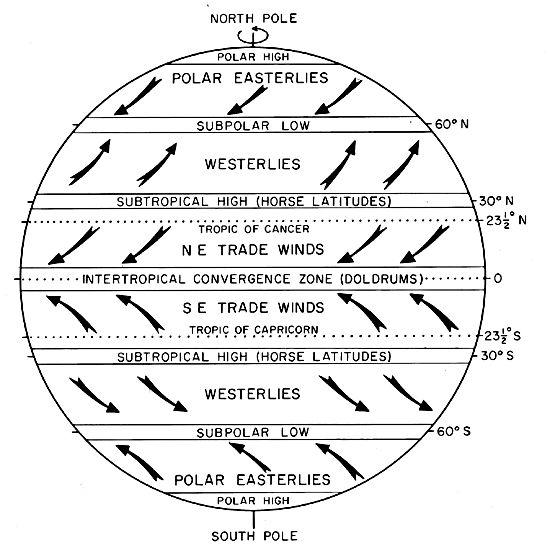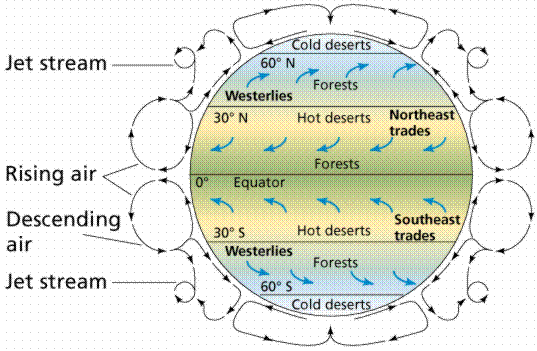Why Does the Wind Blow?
Another thing that we take for granted because, “that’s just the way it works”, but how and why does the wind blow ?
In a Nutshell : The wind blows because some parts of the Earth’s surface heat up more than others, causing air to rise, which draws in air from elsewhere.
What is Wind?
Wind is the movement of air over the Earth’s surface. Air moves from one place to another to even out differences in pressure : If you are in London or New York, there is about 12 km (7.46 miles) of air piled up on top of you, and this mass of air presses down with an average pressure of 1 bar (1,000 mb) or 1 atmosphere. Where part of the Earth’s surface is hotter, the air above the surface is heated, and hot air rises. Rising air creates low pressure. Gases, such as air, flow from areas of high pressure to areas of low pressure.
Why do some parts of the Earth’s surface heat up more than others?
Latitude (position relative to the equator and the poles) is a big influence because the equator gets much more concentrated sunlight than the polar regions. Land and sea are other major influences: land heats up and cools down much faster than water, so that during the day the land tends to be hotter than the sea and vice versa at night. Other influences include ocean currents, forests and mountains.
Temperatures : Rise and Fall
Heating at the equator creates a permanent band of low pressure around the Earth, known as the doldrums. Here air is rising to the top of the atmosphere and spreading out. Meanwhile at what are known as the horse latitudes, air is falling back to Earth creating bands of high pressure. This air flows back toward the equator as the trade winds.
Global Wind Patterns
At the horse latitudes westerlies blow towards the poles and the trade winds (winds blowing from the east) flow back towards the equator.
The rotation of the Earth changes the direction of the wind and causes systems of high and low pressure to spin in enormous whirls, known as cyclones and anticyclones. In tropical regions these systems can turn into hurricanes, where the warm ocean pumps so much energy into the atmosphere that wind speeds reach up to 120 kph (74.56 mph) or more. Hurricanes contain terrifying amounts of energy: in a single day a hurricane releases enough energy to power the entire US for six months, or provide a whole year of power for a country like Britain or France.
Over land, special types of storm cloud can create very concentrated whirls of wind called tornadoes. The highest wind speed ever measured was 516 kph (318 mph) during a tornado in Oklahoma in 1999, but the US National Weather Service estimates that wind speeds can reach up to 800 kph (500 mph) in a tornado.








